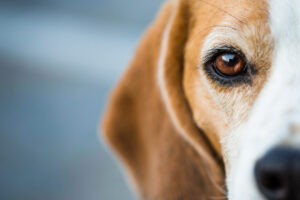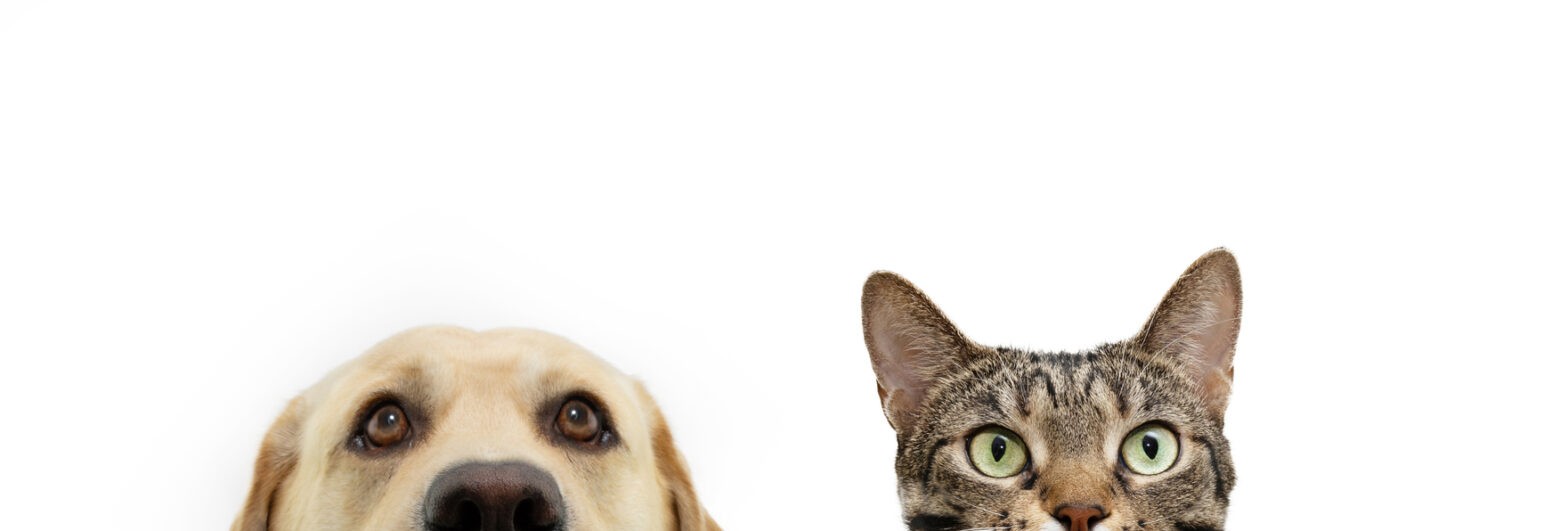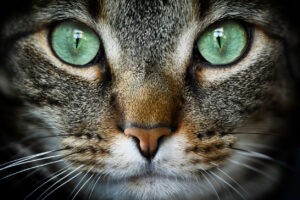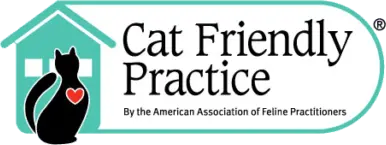Eye problems in pets can range from mild and temporary to painful emergencies that threaten your pet’s vision or health. Unfortunately, determining the severity of your pet’s ocular condition isn’t always easy or obvious. However, our basic guidelines will help you understand what might be happening with your pet’s peepers and whether or not you need to visit the nearest UrgentVet.
Note: If your pet is in visible pain, has obvious swelling, or has experienced head or facial trauma, immediately contact our team. If we think they need advanced care, according to their clinical signs, we may direct you to the nearest UrgentVet location or emergency veterinary center.
What’s Wrong with My Pet? A Guide to Common Ocular Signs
Like your eyes, your pet’s eyes are incredibly sensitive and signs of ocular discomfort are relatively obvious. Although pain is something we hope our pets never experience, pain can make noticing an eye issue before it becomes serious much easier. Here are the most common ocular signs in pets and some of their potential causes.
Your Pet’s Eye is Red and Irritated
Redness in the white area of your pet’s eye (i.e., sclera) or the surrounding tissue and lids (i.e., the conjunctiva) is caused by dilated blood vessels and inflammation. Widespread redness around or inside the iris can be caused by hemorrhage or bleeding in the eye, which may be caused by trauma or disease. Mild redness can be provoked by irritants such as airborne allergies or foreign debris, while significant swelling and redness can signal a more concerning problem. If the redness is accompanied by other signs, such as rubbing, squinting, or unusual discharge, seek prompt veterinary care.

Your Pet is Squinting
Squinting (i.e., partial eyelid closure) can be prompted by pain from injury, debris in the eye, or external irritants, such as bright light. Squinting can be the result of mild conditions, such as seasonal allergies, or more serious conditions, including:
- Corneal ulcers — Scratches on the eye’s surface that may be superficial or deep
- Entropion — Inward-facing eyelids that rub on the eye surface
- Penetrating debris — Foreign boies such as plant material or grit can penetrate the cornea
- Anterior uveitis — An inflammatory condition that can lead to glaucoma or vision loss
If your pet is persistently squinting, seek veterinary attention to address the underlying cause.
Your Pet’s Eye is Bulging or Swollen
Eyes can bulge in response to internal swelling from increased intraocular pressure (i.e., glaucoma) or external conditions that push the eye forward or outward and make it look larger. External issues may include orbital tumors, dental abscesses, systemic disease, or injury behind the eye. If your pet’s eyes are protruding more than usual, seek immediate veterinary attention. Left untreated, many conditions that cause bulging eyes can lead to irreversible damage, proptosis (i.e., eye dislocation), or eye loss.
There is a Discharge from Your Pet’s Eyes
Eye discharge can vary in color and consistency and range from watery and clear, to thick, mucus-like, and opaque. This important variation can suggest different causes, ranging from airborne irritants, to primary or secondary bacterial infections (e.g., conjunctivitis) and can affect one or both eyes. Pets may also experience redness, swelling, and squinting. Unattended discharge can obstruct your pet’s vision or seal the eye shut. Use a warm compress to remove accumulated discharge and schedule an appointment with your pet’s primary veterinarian. Eye discharge does not usually require immediate attention, unless your pet is also experiencing nasal discharge that is affecting their breathing.
Your Pet’s Eye is Cloudy, Hazy, or Opaque
Changes in eye appearance can be normal or signal an underlying abnormality, so your pet should be evaluated by a veterinarian to determine whether the change in your pet’s eye color is concerning. Older dogs may experience a painless age-related hardening of the eye’s lens (i.e., lenticular sclerosis) that creates a hazy bluish cast and mild visual distortion—much like looking through a screen door. Alternatively, a milky or cloudy cast to the eye suggests a cataract—a painless but detrimental condition that can affect one or both eyes. Cataracts can appear gradually or seemingly overnight and affect pets of all ages. Fortunately, cataract surgery can restore vision to affected pets.
The Eyes Have It: Caring for Your Pet’s Eye Health
Fortunately, with prompt treatment, most eye conditions can be successfully managed with topical medication. Serious conditions may require surgery, which can be performed by your primary veterinarian or may require a board-certified veterinary ophthalmologist, depending on the diagnosis.
Your pet’s eyes are the windows to their soul. Help keep their peepers in peak condition by monitoring your pet’s health, maintaining regular preventive veterinary exams, and notifying UrgentVet or your primary veterinarian if you notice changes in your pet’s appearance, behavior, or vision.
If your pet needs professional attention and your regular veterinarian is closed or busy, UrgentVet can provide skilled, convenient, and compassionate care for a range of non-life-threatening injuries and illnesses. Find an UrgentVet location near you and check in online. Your pet can’t wait to feel—and see—better.






